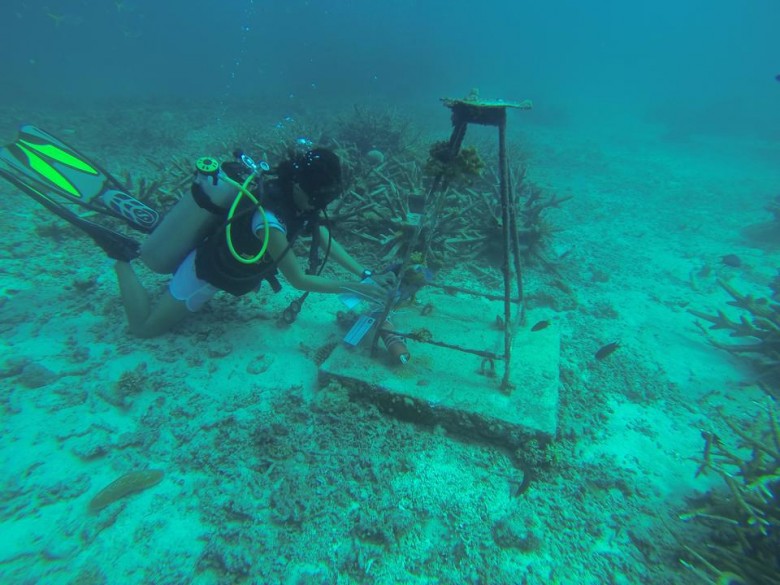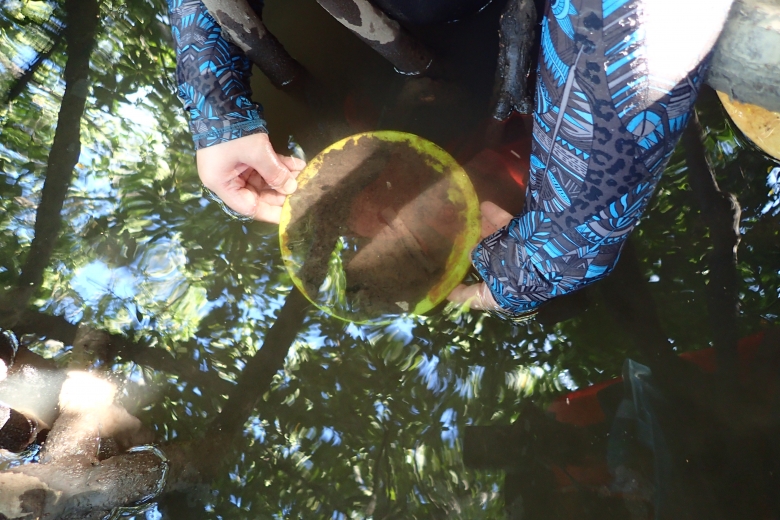
Leilani Solera sets up a wave gauge in Tres Marias, Bacuit Bay to record changes in wave height for a three-month period (photo: C Benjamin)
Monitoring ecosystems in El Nido
December 23 2014
Identifying priority sites for ecosystem conservation requires knowledge on connectivity and habitat quality. One stream of activity within CCRES involves the development of a larval dispersal model that can provide information on the strength of connectivity between reefs in Bacuit Bay, El Nido.
“Understanding connectivity will help determine linkages between reef systems which may have an impact on overall ecosystem health and resilience,” explained Dr Cesar Villanoy, a professor of the University of the Philippines Marine Science Institute (UPMSI) and a CCRES project leader.
The team from UPMSI has conducted three boat surveys in Bacuit Bay over the last year to obtain profiles of ocean currents. The most recent survey was completed in November.
“We will be comparing our observations from the field with the results of a 3D hydrodynamic model that we are currently working on for Bacuit Bay,” said Leilani Solera, a CCRES researcher at the physical oceanography laboratory of the UPMSI.
The dispersal of larvae is largely determined by ocean currents that transport larvae between distant habitat patches.
"Knowing how ocean currents vary spatially and how the hydrodynamic regime changes with, say, the tides or with the seasons, allows us to better capture the extent of dispersal and identify the
As part of the fieldwork, other members of the CCRES team investigated the sediment trapping capacity of mangroves and seagrasses – two other priority ecosystems under consideration in the project.
“Trapping sediment is one of the most important ecological functions that these two habitats provide,” said Dr Cai Samson, director of the International School Research and Development Office of the De La Salle University (DLSU) and CCRES senior researcher working closely with the team from UPMSI.
“Filtering upland runoff protects the adjacent habitats from siltation which can have harmful effects on coral reefs and reduce water quality which in turn impacts marine life and fisheries.”
Data gathered in field surveys in May and November 2014 are now being analyzed to further understand the importance of mangroves and seagrasses in filtering upland runoff.

Measuring sediment collection – plates set under the mangrove trees in May are retrieved and analysed to estimate volumes of sediment trapped (November 2014)




